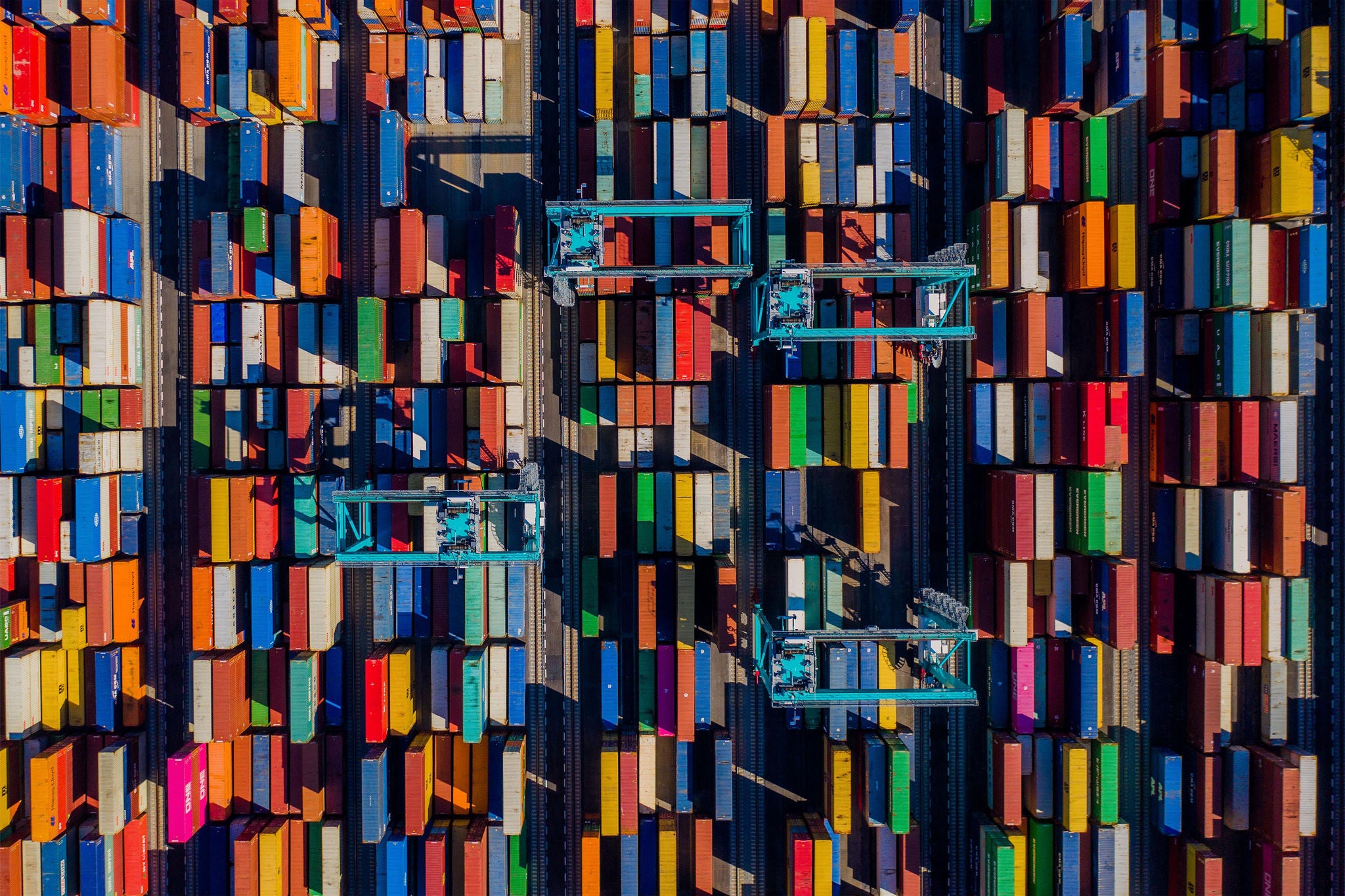EY refers to the global organisation, and may refer to one or more, of the member firms of Ernst & Young Global Limited, each of which is a separate legal entity. Ernst & Young Global Limited, a UK company limited by guarantee, does not provide services to clients.

Government involvement is essential for creating supply chains to drive Australia’s economic growth, trade innovation and global competitiveness.
In brief:
- Australia’s trade prosperity relies on the efficiency, resilience, and security of its supply chains.
- Digital supply chains enable Australia to be more competitive globally.
- Government and industry collaboration is critical for extracting the most value from digital supply chains.
Reliable sourcing of goods has become more challenging due to shifting geopolitics, global inflationary pressures and pandemic-induced disruptions. Amidst that evolving global landscape, there has also been a significant shift in consumer behaviour. Today’s consumers are no longer just passive receivers of goods and services; they've transformed into conscious buyers who are deeply interested in the origins and entire journey of the products they purchase.
To meet this demand for transparency and align with consumers' changing behaviour, businesses are adapting the way they operate. Supply chain digitalisation offers a promising solution, helping companies gain more control and visibility over their end-to-end operations.
Digital supply chains, through innovative tools and systems, offer precise control over the flow of goods from suppliers to customers, maintaining checkable, auditable electronic records at every point of the supply chain. Developments like smart contracts, distributed ledgers, transferable electronic documents and more are making the digital transformation of supply chains more feasible and affordable. This enables businesses to manage stock sources, uphold quality and certifications, and handle customer expectations and demand shifts effectively. The government gains too, from efficient border operations, boosted security, quicker clearances and safer trade networks. Thus, digital supply chain transformations offer substantial benefits not only to businesses and the government but also to society at large.
Our international border is an incredibly important strategic asset that both drives and protects our economy, but it also requires strong foundations, of course, based on integrity and on security.
Digital supply chains deliver transformational benefits
Resilience is one of the key advantages of digital supply chains. They enable proactive identification and mitigation of risks, thereby assuring peak business continuity in the face of turbulent trading conditions. In addition, digital supply chains automate repetitive tasks, optimise processes and procedures, and deliver efficiency gains that reduce lead times, minimise waste and enhance overall productivity.
Digital supply chains deliver security and transparency, which are crucial for successful international trade. They leverage advanced encryption technology and unalterable Blockchain ledgers to protect sensitive trade information and ensure transactional accuracy. This also increases traceability throughout the supply chain, reducing the risk of not only trade fraud but also the introduction of counterfeit goods into the market.
Beyond operational efficiency and security, digital supply chains also play a pivotal role in promoting sustainability and easing environmental impact. They optimise logistics routes, minimise excess inventory and facilitate end-to-end visibility – enabling businesses to reduce their carbon footprint and embrace climate-friendly practices. They substantiate Environmental, Social and Governance (ESG) initiatives, needed to meet customer demands for ethically sourced, climate-friendly, and responsibly produced goods.
Be it enhanced provenance or expedited delivery of goods, digital supply chains elevate customer delight and drive loyalty.
If we want to be connected to the rest of the world and be an internationally facing country, we must participate in the new supply chains that will dominate the world economy.
Significant progress is already being made.
Australia's National Agricultural Traceability Strategy3 demonstrates the importance of collaboration between government and industry in driving digital innovation in supply chain management. By co-designing a 10-year roadmap with industry stakeholders, the Australian government aims to enhance traceability, improve trade compliance, and boost competitiveness in agriculture.
Just across the equator, Singapore's Smart Port initiative exemplifies digitisation’s enhancement of port operations and the ability to improve supply chain logistics. It uses Internet of things (IoT) sensors, AI-powered analytics and Blockchain technology to transform Singapore’s ports. Creating intelligent, data-driven hubs for streamlining cargo handling, improving vessel scheduling and increasing overall efficiency.
Further afield, the United Kingdom’s Electronic Trade Documents Act epitomises the role of regulatory reform in promoting digitalisation and streamlining international trade processes. It has paved the way for completely digitalised shipments, reduced paperwork and expedited cross-border transactions. By granting legal recognition to digital trade documents and ensuring compliance with regulatory requirements.
Government involvement is a critical success factor
While the benefits of digital supply chains are undeniable, their adoption and implementation are not without challenges. Government is instrumental in navigating and overcoming these by being a catalyst, enabler, and regulator. By shaping digital supply chain innovation, driving policy reform, and fostering collaboration between stakeholders.
From investment in digital infrastructure to the formulation of regulatory frameworks, government involvement is indispensable.
It plays a critical role in setting clear and flexible regulatory frameworks that promote innovation, ensure data privacy, and safeguard consumer rights. Together with its agencies, it can develop standards and best practices that facilitate interoperability, reduce compliance costs, and foster policy and legislative innovation.
Government must also play a role in the development and maintenance of national information and communication technology (ICT) infrastructure. This includes networks, training enhanced digital skills that enable business, and creating heightened digital security awareness to foster a cyber secure culture.
Effective collaboration between government agencies, industry associations and academia is another crucial aspect of driving innovation and knowledge-sharing. Government can facilitate industry dialogue to address common challenges and co-create solutions by facilitating advisory councils, task forces and industry forums. Especially to overcome common frictions that impede progress, such as alleviating resistance to change, dealing with unfounded fears of job losses and addressing the lack of digital literacy absent in some industries.
Simplifying the processes and systems that enable Australian exporters to trade more efficiently will deliver flow on benefits to virtually all aspects of everyday life. More trade means more well-paying jobs, more national income, and more opportunities for business.
Related Articles
How to navigate global sustainability compliance challenges
Staying ahead of ESG regulations on a global scale can be a challenge but, businesses cannot risk falling behind on supply chain policies. Learn more.
How supply chains benefit from using generative AI
Early use cases of generative AI in supply chains prove its worth in delivering cost savings and a simplified user experience. Read more.
How data analytics can strengthen supply chain performance
EY Supply Chain SmartMaps™ helped a global energy company leverage buying power, strengthen processes, reduce costs and optimize inventory. Learn more.
Summary
The Australian Government can facilitate frictionless trade through digital supply chains by establishing the necessary regulatory frameworks and becoming the catalyst for promoting industry-wide standards. It must create the right incentives for investments in digital infrastructures while safeguarding against risk and security threats.
Digital supply chains can drive Australia’s economic growth, trade innovation and global competitiveness. Government involvement creates that reality.




